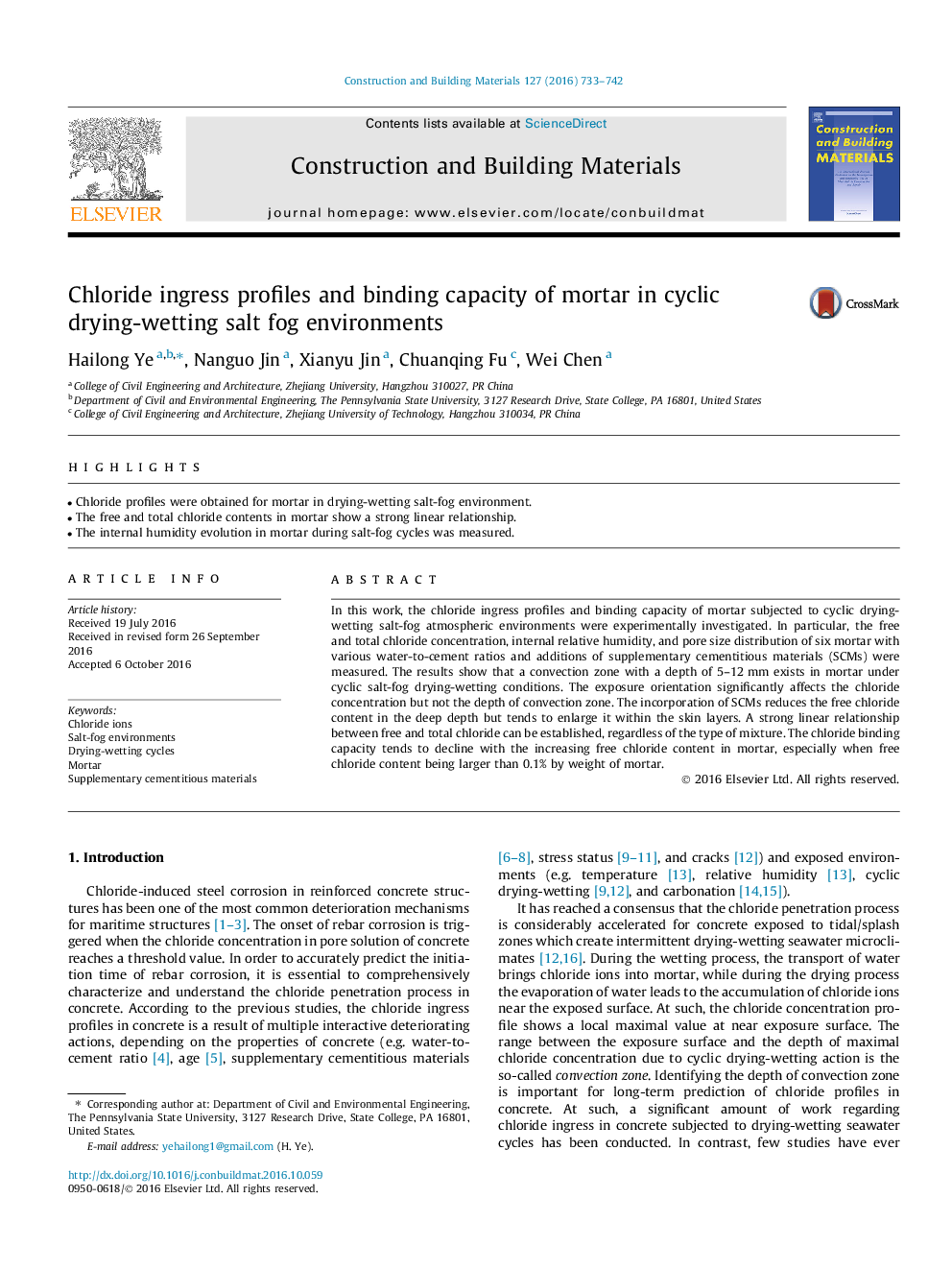| Article ID | Journal | Published Year | Pages | File Type |
|---|---|---|---|---|
| 4913986 | Construction and Building Materials | 2016 | 10 Pages |
Abstract
In this work, the chloride ingress profiles and binding capacity of mortar subjected to cyclic drying-wetting salt-fog atmospheric environments were experimentally investigated. In particular, the free and total chloride concentration, internal relative humidity, and pore size distribution of six mortar with various water-to-cement ratios and additions of supplementary cementitious materials (SCMs) were measured. The results show that a convection zone with a depth of 5-12Â mm exists in mortar under cyclic salt-fog drying-wetting conditions. The exposure orientation significantly affects the chloride concentration but not the depth of convection zone. The incorporation of SCMs reduces the free chloride content in the deep depth but tends to enlarge it within the skin layers. A strong linear relationship between free and total chloride can be established, regardless of the type of mixture. The chloride binding capacity tends to decline with the increasing free chloride content in mortar, especially when free chloride content being larger than 0.1% by weight of mortar.
Related Topics
Physical Sciences and Engineering
Engineering
Civil and Structural Engineering
Authors
Hailong Ye, Nanguo Jin, Xianyu Jin, Chuanqing Fu, Wei Chen,
